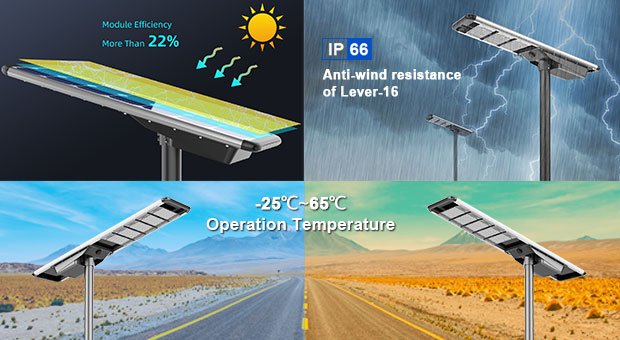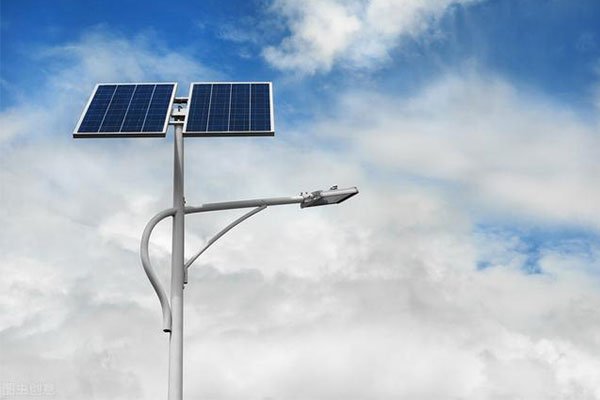Motion sensor technology in solar street lights enhances energy efficiency, security, and sustainability by adjusting brightness based on movement detection. This function reduces energy waste and extends battery life.
Understanding how motion sensors work, their integration, and ways to optimize performance ensures the best use of solar street lights. Let’s explore the details.
Understanding Motion Sensor Technology
Motion sensors detect movement and adjust lighting accordingly. Different sensor types offer varying levels of sensitivity and accuracy.
What Are Motion Sensors and How Do They Work?
Motion sensors identify physical movement within a specific range and send signals to the light controller. The controller then adjusts brightness levels, activating full illumination when motion is detected and dimming when no movement is present.
Types of Motion Sensors Used in Solar Street Lights
| Sensor Type | Detection Method | Key Features |
|---|---|---|
| Passive Infrared (PIR) | Detects infrared radiation changes | Low power consumption, effective for pedestrian areas |
| Microwave Sensors | Measures reflected microwave signals | Longer range, can penetrate certain obstacles |
| Ultrasonic Sensors | Uses sound waves to detect motion | Highly sensitive but may be affected by environmental noise |
| Dual Technology Sensors | Combines two methods for accuracy | Reduces false triggers, more reliable in complex environments |
Advanced Features of Motion Sensors
- Adjustable Sensitivity – Prevents unnecessary triggers from small objects like animals.
- Daylight Sensing – Ensures lights operate only in low-light conditions.
- Smart System Integration – Works with remote monitoring for automated adjustments.
How Motion Sensors Are Integrated into Solar Street Lights?

Motion sensors must be correctly installed and configured for maximum efficiency. Proper integration ensures optimal lighting performance and energy conservation.
1. Sensor Selection
- Choose the right type based on detection range, environmental factors, and installation height.
- PIR sensors work best for pedestrian walkways, while microwave sensors cover larger areas.
2. Placement and Installation
- Install the motion sensor at an ideal height (4-6 meters) for optimal detection.
- Avoid placing sensors near heat sources, trees, or reflective surfaces to reduce false triggers.
3. Wiring and Connectivity
- The sensor connects to the controller, which manages lighting responses.
- Wireless motion sensors can integrate with smart solar lighting systems for remote adjustments.
4. Trigger Mechanism and Customization
- When motion is detected, the controller signals the LED light to increase brightness.
- Dimming settings allow the light to return to 30-50% brightness when no movement is detected.
- Users can adjust sensitivity, time delay, and daylight control for specific needs.
5. Energy Efficiency Impact
- Motion sensors reduce unnecessary energy consumption, ensuring longer battery life.
- A properly configured system can extend nighttime operation even during cloudy days.
Key Components of a Motion-Activated Solar Street Light System

A motion-activated solar street light system consists of several essential components working together.
| Component | Function |
|---|---|
| Motion Sensor | Detects movement and triggers lighting adjustments. |
| Controller | Processes sensor signals and regulates lighting settings. |
| LED Lights | The primary light source, adjusted in response to detected motion. |
| Solar Panel | Captures solar energy and charges the battery. |
| Battery | Stores energy to power the system at night. |
Proper selection and integration of these components improve the overall efficiency of the system.
Benefits of Motion Sensor Technology in Solar Street Lights
Using motion sensor technology in solar street lights offers multiple advantages, from energy savings to enhanced security.
1. Energy Savings
- Reduces unnecessary illumination, lowering power consumption.
- Extends battery life, ensuring long-term operation.
2. Enhanced Security
- Motion-activated lighting deters intruders in public and private spaces.
- Improves visibility in dark areas, reducing accident risks.
3. Extended System Lifespan
- LEDs and batteries last longer due to reduced runtime.
- Fewer replacements lead to lower maintenance costs.
4. Environmental Impact
- Lowers carbon emissions by minimizing energy usage.
- Reduces reliance on grid electricity, promoting sustainability.
Optimizing Motion Sensor Performance
](https://huawei-light.com/wp-content/uploads/2025/02/imagine-prompt-engineers-optimizing-solar-street.jpg)
Proper configuration and maintenance enhance motion sensor efficiency and prevent false triggers.
✅ Adjust Sensitivity Levels
- Avoid unnecessary activations from wind-blown objects or small animals.
- Set the detection range according to traffic and pedestrian flow.
✅ Customize Settings for Efficiency
- Adjust time delay to keep lights on for a specific duration after detecting movement.
- Enable dimming mode for longer battery life.
✅ Regular Maintenance
- Clean motion sensors to prevent dust and debris from affecting detection.
- Check for obstructions or damage that could impact sensor function.
✅ Upgrade to Smart Systems
- Some solar street lights allow remote monitoring and automatic adjustments via mobile apps.
- Smart systems can self-adjust sensitivity and brightness based on real-time conditions.
Conclusion
Motion sensors in solar street lights improve energy efficiency, security, and sustainability. By detecting movement and adjusting brightness levels, they optimize energy use and extend system lifespan.
- Different motion sensor types provide varying levels of accuracy and range.
- Proper installation and placement ensure reliable performance.
- Regular maintenance and sensitivity adjustments enhance efficiency.
- Smart system upgrades enable remote control and automation for better energy management.
By integrating and optimizing motion sensors, solar street lights can provide reliable and cost-effective illumination with minimal maintenance and maximum energy savings.







